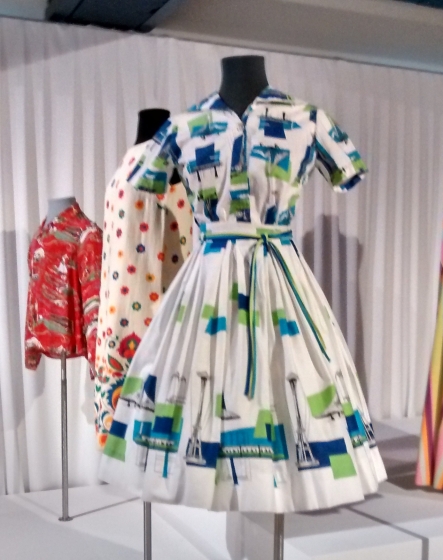
Every year Costume Society of America hosts a symposium, where professionals gather to discuss historical and cultural dress.
Costume Society of America was founded in 1973. As a non-profit organization they seek to offer educational opportunities in historical dress. Their mission statement:
The Costume Society of America fosters an understanding of appearance and dress practices of people across the globe through research, education, preservation, and design. Our network of members studies the past, examines the present, and anticipates the future of clothing and fashion.
This year I attended the CSA symposium for the first time. Held in Seattle, Washington it was four packed days of paper presentations, professional development workshops, meetings, exhibitions, and lots of chances to meet new friends among over 250 like-minded people. Attendees included professors, historians, costumers, and museum curators. I’m not sure, but I might have been the only fashion writer. Although there were plenty of academic writers.
This year’s theme was The Pacific Rim and Beyond: Diffusion and Diversity in Dress. The keynote speaker Akiko Fukai from the Kyoto Costume Institute opened the symposium with an enthusiastic speech on the influence of Kimono and Japanese dress on western fashion.
Presentations varied and covered topics from costuming Shakespeare to pattern creation, from prison attire to clothing terminology, from modern Muslim dress to 1790s menswear.
My favorite presentations happened to be grouped together on the final day of the symposium.
Union-Made: Fashioning America in the 20th Century. Denise Nicole Green, Ph.D. discussed a multi-media exhibition at Cornell University that chronicled the rise and fall of union-made clothing in America. The exhibit included union-made clothing, photos, sewing machines, ephemera, and artifacts from the the university’s costume collection and union archives. What a rich and fascinating topic.
Sustainable Clothing – Nothing New: Women’s Magazines Encouraged Clothing Recycling During World War II presented by Nan Turner, professor at University of California, Davis. We could learn a thing or two from fashionable women of the war generation. With all resources going to the “war effort” clothing was rationed both in England and Europe. Recycle, up-cycle and “Make-do and Mend” were a way of life. Researching fashion magazines of the period and interviewing women in Britain who lived through the war, Ms. Turner considered how women went about refashioning their clothing. This paper is part of a book Ms. Turner is currently working on. I look forward to reading that book!
Corporate Fashion Archives and the Growing Role of the Historian: Using PVH Archives as a Case Study presented by Becca Love, PVH Archives. Ms. Love has a very interesting job – she manages part of the archives for PVH, a fashion conglomerate which owns brands Calvin Klein, IZOD, Arrow, and Geoffrey Beene, among others. PVH Archives launched in 2014. In this paper presentation Ms. Love discussed this new avenue in corporate fashion houses for fashion historians. As legacy brands begin to tout their history, archives have become important for inspiration, research, and PR cachet. Growing archives create a need for professionals to manage these archives. With limited and competitive options elsewhere for museum curators and fashion historians, corporate fashion houses are an exciting option. I really enjoyed learning about this new and growing career path.
All in all it was a week of full immersion in fashion academics.
There is more to report so I’ll be posting again on the CSA Annual Symposium in the coming weeks. Stay tuned.
Read Full Post »
















 If you’ve got belt loops on a trouser, wear a belt. Otherwise, it looks like you forgot. The only exception: jeans. Wear a fresh white shirt with a pair of jeans and loafers or driving moccasins. You will feel like Robert Redford.
If you’ve got belt loops on a trouser, wear a belt. Otherwise, it looks like you forgot. The only exception: jeans. Wear a fresh white shirt with a pair of jeans and loafers or driving moccasins. You will feel like Robert Redford. 